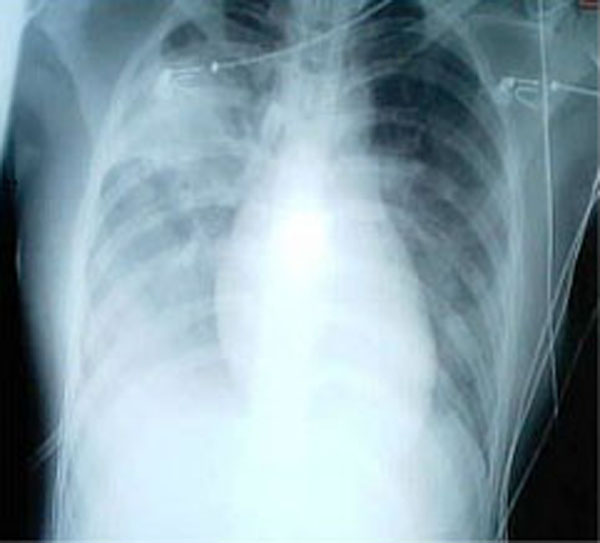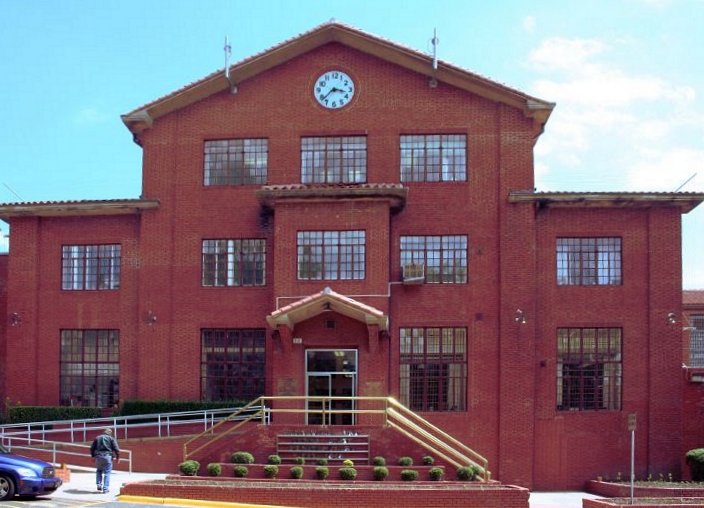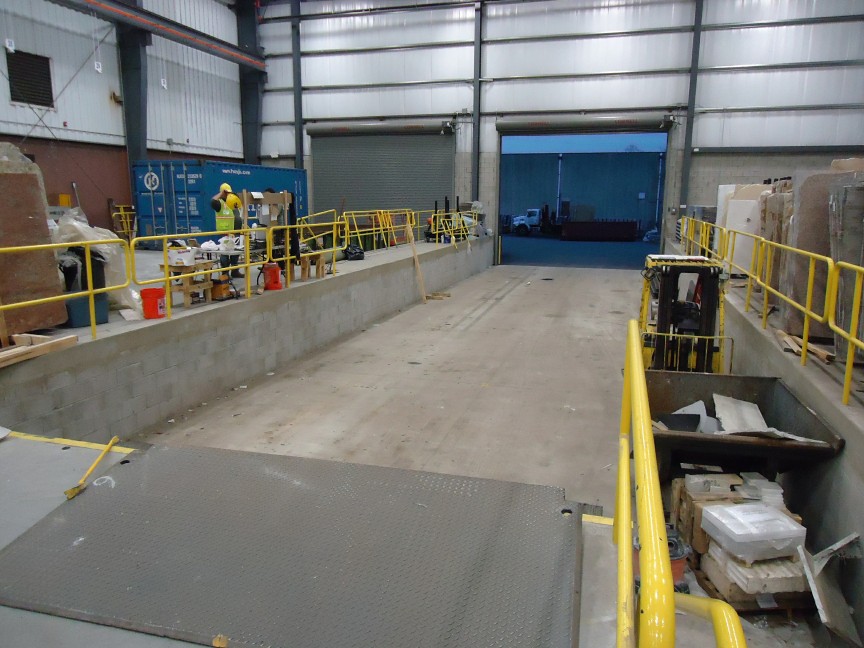|
Real-time Locating Systems
Real-time locating systems (RTLS), also known as real-time tracking systems, are used to automatically identify and track the location of objects or people in real time, usually within a building or other contained area. Wireless RTLS tags are attached to objects or worn by people, and in most RTLS, fixed reference points receive wireless signals from tags to determine their location. Examples of real-time locating systems include tracking automobiles through an assembly line, locating pallets of merchandise in a warehouse, or finding medical equipment in a hospital. The physical layer of RTLS technology is often radio frequency (RF) communication. Some systems use optical (usually infrared) or acoustic (usually ultrasound) technology with, or in place of, RF. RTLS tags and fixed reference points can be transmitters, receivers, or both, resulting in numerous possible technology combinations. RTLS are a form of local positioning system and do not usually refer to GPS or to ... [...More Info...] [...Related Items...] OR: [Wikipedia] [Google] [Baidu] |
Automatic Identification And Data Capture
Automatic identification and data capture (AIDC) refers to the methods of automatically identifying objects, collecting data about them, and entering them directly into computer systems, without human involvement. Technologies typically considered as part of AIDC include QR codes, bar codes, radio frequency identification (RFID), biometrics (like iris and facial recognition system), magnetic stripes, optical character recognition (OCR), smart cards, and voice recognition. AIDC is also commonly referred to as "Automatic Identification", "Auto-ID" and "Automatic Data Capture". AIDC is the process or means of obtaining external data, particularly through the analysis of images, sounds, or videos. To capture data, a transducer is employed which converts the actual image or a sound into a digital file. The file is then stored and at a later time, it can be analyzed by a computer, or compared with other files in a database to verify identity or to provide authorization to ... [...More Info...] [...Related Items...] OR: [Wikipedia] [Google] [Baidu] |
Sensory Network
A sensor grid integrates wireless sensor networks with grid computing concepts to enable real-time data collection and the sharing of computational and storage resources for sensor data processing and management. It is an enabling technology for building large-scale infrastructures, integrating heterogeneous sensor, data and computational resources deployed over a wide area, to undertake complicated surveillance tasks such as environmental monitoring. Concept and history The concept of a sensor grid was first defined in the Discovery Net project where a distinction was made between “sensor networks” and “sensor grids”. Briefly whereas the design of a sensor network addresses the logical and physical connectivity of the sensors, the focus of constructing a sensor grid is on the issues relating to the data management, computation management, information management and knowledge discovery management associated with the sensors and the data they generate, and how they can be ... [...More Info...] [...Related Items...] OR: [Wikipedia] [Google] [Baidu] |
Continual Improvement Process
A continual improvement process, also often called a continuous improvement process (abbreviated as CIP or CI), is an ongoing effort to improve products, services, or processes. These efforts can seek " incremental" improvement over time or "breakthrough" improvement all at once. Delivery (customer valued) processes are constantly evaluated and improved in the light of their efficiency, effectiveness and flexibility. Some see CIPs as a meta-process for most management systems (such as business process management, quality management, project management, and program management). W. Edwards Deming, a pioneer of the field, saw it as part of the 'system' whereby feedback from the process and customer were evaluated against organisational goals. The fact that it can be called a management process does not mean that it needs to be executed by 'management'; but rather merely that it makes decisions about the implementation of the delivery process and the design of the delivery process it ... [...More Info...] [...Related Items...] OR: [Wikipedia] [Google] [Baidu] |
SARS
Severe acute respiratory syndrome (SARS) is a viral respiratory disease of zoonotic origin caused by the severe acute respiratory syndrome coronavirus (SARS-CoV or SARS-CoV-1), the first identified strain of the SARS coronavirus species, '' severe acute respiratory syndrome–related coronavirus'' (SARSr-CoV). The first known cases occurred in November 2002, and the syndrome caused the 2002–2004 SARS outbreak. In the 2010s, Chinese scientists traced the virus through the intermediary of Asian palm civets to cave-dwelling horseshoe bats in Xiyang Yi Ethnic Township, Yunnan.The locality was referred to be "a cave in Kunming" in earlier sources because the Xiyang Yi Ethnic Township is administratively part of Kunming, though 70 km apart. Xiyang was identified on * For an earlier interview of the researchers about the locality of the caves, see: SARS was a relatively rare disease; at the end of the epidemic in June 2003, the incidence was 8,469 cases with a case fatality r ... [...More Info...] [...Related Items...] OR: [Wikipedia] [Google] [Baidu] |
Toronto General Hospital
The Toronto General Hospital (TGH) is a major teaching hospital in Toronto, Ontario, Canada and the flagship campus of University Health Network (UHN). It is located in the Discovery District of Downtown Toronto along University Avenue's Hospital Row; it is directly north of The Hospital for Sick Children, across Gerrard Street West, and east of Princess Margaret Cancer Centre and Mount Sinai Hospital. The hospital serves as a teaching hospital for the University of Toronto Faculty of Medicine. In 2019, the hospital was ranked first for research in Canada by Research Infosource for the ninth consecutive year. The emergency department now treats 28,065 persons each year, while the hospital also houses the major transplantation service for Ontario, performing heart, lung, kidney, liver, pancreas, and small intestine, amongst others, for patients referred from all over Canada. The hospital is the largest organ transplant center in North America, performing 639 transplants in 2 ... [...More Info...] [...Related Items...] OR: [Wikipedia] [Google] [Baidu] |
Emergency Evacuation
Emergency evacuation is the urgent immediate egress or escape of people away from an area that contains an imminent threat, an ongoing threat or a hazard to lives or property. Examples range from the small-scale evacuation of a building due to a storm or fire to the large-scale evacuation of a city because of a flood, bombardment or approaching weather system, especially a tropical cyclone. In situations involving hazardous materials or possible contamination, evacuees may be decontaminated prior to being transported out of the contaminated area. Evacuation planning is an important aspect of business management of which emergency evacuation forms a part. Reasons for evacuation Evacuations may be carried out before, during, or after disasters such as: * Natural disasters ** Eruptions of volcanoes ** Tropical cyclones ** Floods ** Earthquakes ** Tsunamis ** Wildfires/Bushfires * Industrial accidents ** Chemical spill ** Nuclear accident * Transport ** Road acci ... [...More Info...] [...Related Items...] OR: [Wikipedia] [Google] [Baidu] |
Correctional Facility
In criminal justice, particularly in North America, correction, corrections, and correctional, are umbrella terms describing a variety of functions typically carried out by government agencies, and involving the punishment, treatment, and supervision of persons who have been convicted of crimes. These functions commonly include imprisonment, parole, and probation.Bryan A. Garner, editor, ''Black's Law Dictionary'', 9th ed., West Group, 2009, , 0-314-19949-7, p. 396 (or p. 424 depending on the volume) A typical ''correctional institution'' is a prison. A ''correctional system'', also known as a ''penal system'', thus refers to a network of agencies that administer a jurisdiction's prisons, and community-based programs like parole, and probation boards. This system is part of the larger criminal justice system, which additionally includes police, prosecution and courts. Jurisdictions throughout Canada and the US have ministries or departments, respectively, of corrections, co ... [...More Info...] [...Related Items...] OR: [Wikipedia] [Google] [Baidu] |
Food Delivery
Retail food delivery is a courier service in which a restaurant, store, or independent food-delivery company delivers food to a customer. An order is typically made either through a restaurant or grocer's website or mobile app, or through a food ordering company. The delivered items can include entrees, sides, drinks, desserts, or grocery items and are typically delivered in boxes or bags. The delivery person will normally drive a car, but in bigger cities where homes and restaurants are closer together, they may use bikes or motorized scooters. Recently, online food delivery through third-party companies have become a growing industry and caused a "delivery revolution." Nascent technologies, such as autonomous vehicles have also been used to complete deliveries. Customers can, depending on the delivery company, choose to pay online or in person, with cash or card. A flat rate delivery fee is often charged with what the customer has bought. Sometimes no delivery fe ... [...More Info...] [...Related Items...] OR: [Wikipedia] [Google] [Baidu] |
Warehouse
A warehouse is a building for storing goods. Warehouses are used by manufacturers, importers, exporters, wholesalers, transport businesses, customs, etc. They are usually large plain buildings in industrial parks on the outskirts of cities, towns, or villages. Warehouses usually have loading docks to load and unload goods from trucks. Sometimes warehouses are designed for the loading and unloading of goods directly from railways, airports, or seaport A port is a maritime law, maritime facility comprising one or more Wharf, wharves or loading areas, where ships load and discharge Affreightment, cargo and passengers. Although usually situated on a sea coast or estuary, ports can a ...s. They often have crane (machine), cranes and Forklift truck, forklifts for moving goods, which are usually placed on International Organization for Standardization, ISO standard pallets and then loaded into pallet racking, pallet racks. Stored goods can include any raw material ... [...More Info...] [...Related Items...] OR: [Wikipedia] [Google] [Baidu] |
Logistics
Logistics is generally the detailed organization and implementation of a complex operation. In a general business sense, logistics manages the flow of goods between the point of origin and the point of consumption to meet the requirements of customers or corporations. The resources managed in logistics may include tangible goods such as materials, equipment, and supplies, as well as food and other consumable items. In military science, logistics is concerned with maintaining army supply lines while disrupting those of the enemy, since an armed force without resources and transportation is defenseless. Military logistics was already practiced in the ancient world and as the modern military has a significant need for logistics solutions, advanced implementations have been developed. In military logistics, logistics officers manage how and when to move resources to the places they are needed. Logistics management is the part of supply chain management and supply chain enginee ... [...More Info...] [...Related Items...] OR: [Wikipedia] [Google] [Baidu] |
Mobile Tagging
Mobile tagging is the process of providing data read from tags for display on mobile devices, commonly encoded in a two-dimensional barcode, using the camera of a camera phone as the reader device. The contents of the tag code is usually a URL for information addressed and accessible through Internet. History Mobile tagging is currently most prominent in Asia, especially Japan. It was developed in 2003 and ever since it has been used in several fields of mobile marketing. Denso's QR Code in Asia and the Data Matrix are currently the most popular 2D barcodes. Both are ISO-standardised. In 2009, prominent electronics company Microsoft introduced the Microsoft Tag format, based on the company's self-developed High Capacity Color Barcode (HCCB) standard, in an effort to establish the format through emerging mobile tagging markets in the west. Unlike most popular 2D barcodes, which use black-and-white square pixels, HCCBs are based on colors in a triangle-based arrangement. The reas ... [...More Info...] [...Related Items...] OR: [Wikipedia] [Google] [Baidu] |
Ranging
Length measurement, distance measurement, or range measurement (ranging) refers to the many ways in which length, distance, or range can be measured. The most commonly used approaches are the rulers, followed by transit-time methods and the interferometer methods based upon the speed of light. For objects such as crystals and diffraction gratings, diffraction is used with X-rays and electron beams. Measurement techniques for three-dimensional structures very small in every dimension use specialized instruments such as ion microscopy coupled with intensive computer modeling. Standard rulers The ruler the simplest kind of length measurement tool: lengths are defined by printed marks or engravings on a stick. The metre was initially defined using a ruler before more accurate methods became available. Gauge blocks are a common method for precise measurement or calibration of measurement tools. For small or microscopic objects, microphotography where the length is calibrat ... [...More Info...] [...Related Items...] OR: [Wikipedia] [Google] [Baidu] |








